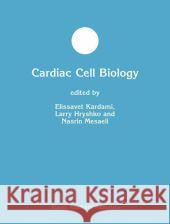Cardiac Cell Biology » książka
Cardiac Cell Biology
ISBN-13: 9781402072963 / Angielski / Twarda / 2003 / 194 str.
Cardiac Cell Biology
ISBN-13: 9781402072963 / Angielski / Twarda / 2003 / 194 str.
(netto: 575,06 VAT: 5%)
Najniższa cena z 30 dni: 578,30
ok. 22 dni roboczych
Dostawa w 2026 r.
Darmowa dostawa!
Cardiac cell biology has come of age.
Recognition of activated or modified signaling molecules by specific antibodies, new selective inhibitors, and fluorescent fusion tags are but a few of the tools used to dissect signaling pathways and cross-talk mechanisms that may eventually allow rational drug design. Understanding the regulation of cardiac hypertrophy in all its complexity remains a fundamental goal of cardiac research. Since the advancement of adenovirally mediated gene transfer, transfection efficiency is no longer a limiting factor in the study of cardiomyocytes. A limiting factor in considering cell transplantion as a strategy to repair the damaged heart is cell availability at the right time. Cardiac gap junctions, intercellular communication channels that allow electrical and metabolic coupling and play an important role in arrhythmogenesis are now understood to be exquisite sensors of cardiac change.
The reports in this volume incLude elegant studies that made use of cutting edge technological advances and many specialized reagents to address these issues.











